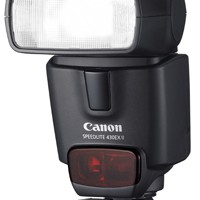
What do you mean by flashguns, Gareth? Are you talking about ostentatious weaponry?
To be fair, I’m sure you’ve heard of flashguns before, but I needed an excuse to start with a bad joke. This week’s Photography Concept on Friday is about flashguns, and why you should consider taking the plunge and buying one.
Flashguns come in a variety of shapes, sizes and prices, each having their pros and cons. They all share the same selling point, though – a flashgun allows you to have much greater control over the power and direction of your flash.
Most flashguns fit snugly into the hotshoe on top of your camera (that metal thing that sort of looks like a giant staple… sort of… ) and give you an immediate creative advantage. Here’s an exciting bullet point list of what you can do with flashguns that you can’t with most built in flashes:
- You can angle the flash to fire in a direction other than directly at your subject
- You can manually alter the strength of the flash
- You can add a diffuser to your flash
- It reduces the chance of red eye, as explained in an earlier PCoF by our very own Matthew Druin.
Now you may be wondering ‘Why on earth would you want to fire your flash somewhere other than at what you’re photographing? That’s a bit postmodern isn’t it?’ As a portrait photographer, I’ll use the example of a headshot to explain why it’s beneficial to be able to control the direction of your flash.
When you point your flash directly at someone’s face for a headshot, the quality of light is often both too strong and too ‘hard’. This can create nasty big, sharp shadows on someone’s face. Direct flash can also have one of two other effects: your subject either ends up looking very shiny and sweaty, or their entire face is bright white, save for their irises, as if they were part of some kind of benevolent alien race.
A flashgun allows you to bounce your light off the ceiling, wall or other object by taking advantage of its ability to swivel and move. This diffuses the light and allows it to spread before reaching your subject, giving them a more naturally lit appearance.
With a flashgun, you can manually set the strength, or power, of your flash. This is an advanced technique and will take practice but the results can be fantastic. A common example of manually setting the strength of a flash is when shooting a portrait with a bright light source behind the subject, such as the sun (a fairly bright light source, I’m sure you’ll agree). A small amount of what’s known as ‘fill in flash’ will allow you to do just that – fill in the light that will be missing from the front of your subject. Now, a shot that would usually result in a sihouette has turned into a dramatic, interesting portrait. Good eh?
If that sounds daunting, don’t worry – most modern flashguns have what’s known as a ‘TTL’ or Through The Lens mode, where your flashgun talks to your camera (not literally – if this is happening, go see a doctor) and automatically sets the correct flash power depending on your camera settings and direction of your flashgun.
Adding a diffuser to your flashgun provides you with even greater control over your light source. They’re not too expensive but are, essentially, glorified yoghurt pots that have been shaped correctly to fit over the head of the flashgun. When bouncing the light off an object with a diffuser attached, you get two stages of diffusion, making the quality of your light even better.
I didn’t even get to off-camera flash yet or the idea of using multiple flashguns to light a scene, but I think that’s enough for you to digest for now. I’ll leave you with an example of a portrait I took using a flashgun:
As an on-location portrait photographer for magazines, a flashgun is absolutely essential for me. In this diptych, I used a flashgun with diffuser attached. The flash was pointed upward and was bounced off the ceiling, back down onto the subject. What you will notice is that aside from the small dot of light within the pupil, it isn’t apparent that a flashgun was used at all. This is the sort of effect you’re looking for.
Now have you taken all that in? Promise? Good. Off you pop, then.






